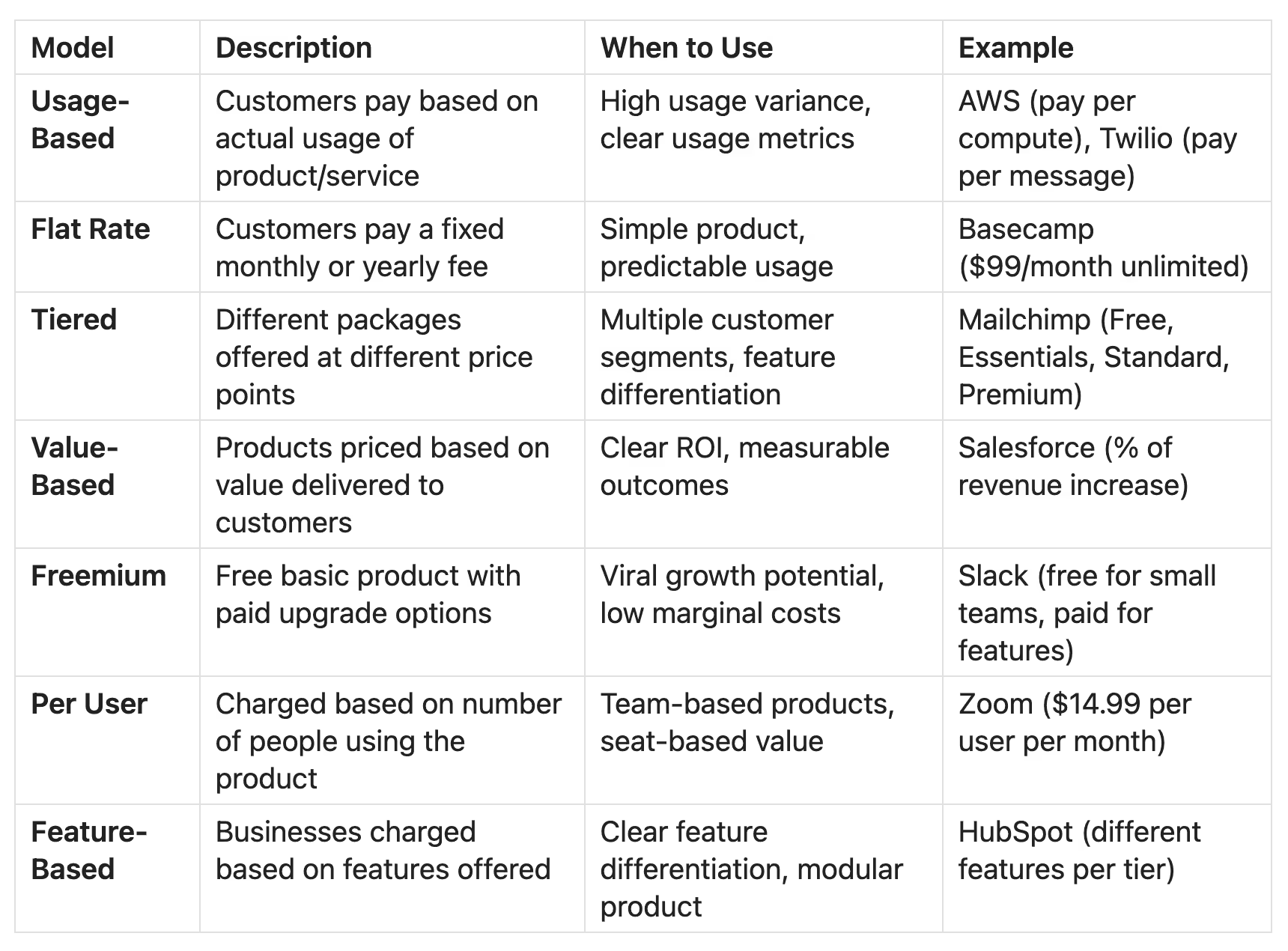
Conversation

🥳 Feedback Received!
Thanks for taking a moment to share your thoughts — it genuinely helps us make each chapter sharper.
What happens next:
- Your feedback goes straight to our product team.
- We’ll use it to refine lessons, clarify examples, and make the program even more useful.
Appreciate you helping make this program better for everyone.
Ready for your next challenge? 👇
Choose a Pricing Model
Key Idea: Pricing is one of the deepest topics in startups. There's no perfect answer, and it will evolve as you learn. Before you hop on calls, you need a starting point.
Permission Slip: You don't need to obsess about getting it perfect. Pick a model that feels intuitive, put it in front of customers, and watch the reactions. Early sales calls are as much about discovering willingness to pay as they are about closing. Pricing is a living experiment.
Outcome
By the end of this step, you'll have selected an initial pricing model that you can test with prospects and iterate based on their reactions.
How to Get Your Starting Point
- Look at competitors. What are similar tools charging? Do they price per user, per outcome, per month, or usage-based?
- Look at analogs. If you don't have direct competitors, find products in adjacent spaces. What's familiar to your buyer?
- Use pricing as a wedge. Sometimes your pricing model is the differentiator. If all competitors charge monthly, you can try usage-based or outcome-based.
Seven Common SaaS Pricing Models

AI Research Prompt to Speed Up Analysis
"Research AI SDR tools and return a list of their pricing models, price points, and positioning. Suggest 3 alternative pricing approaches for a new entrant that could stand out."
AI SDR Options You'll Find
- Volume-based pricing - per agent or per X messages
- Flat per month pricing - simple monthly fee
- Outcome-based pricing - cost per lead or per meeting booked
Ora.im Example
Current model: $500 per agent per month, each agent sends about 50 one-to-one emails daily.
Smart positioning: Ora isn't anchoring against "other SaaS tools." The anchor is the cost of a human SDR. If an outsourced SDR costs several thousand per month, then a few hundred per month for an AI agent that sends daily, high-quality outreach can be positioned as a bargain.
Why this works: They're competing against human labor costs, not software costs. This completely changes the value perception.
Decision Framework
Ask yourself these questions:
- What's the clearest value metric? (users, usage, outcomes, time saved)
- How do competitors price? (opportunity to differentiate or follow proven models)
- What's familiar to your buyer? (reduces friction in sales conversations)
- Can you anchor against something expensive? (human labor, current solutions, cost of the problem)
Assignment
- Research 3-5 competitors or analogs and document their pricing models
- Choose your initial model using the decision framework above
- Prepare to test this model in your next sales conversations
What's Next
Now that you have a pricing model, we'll move to Pt 2: Set a Price & Defend Value, setting your actual price and learning how to defend the value to prospects.


